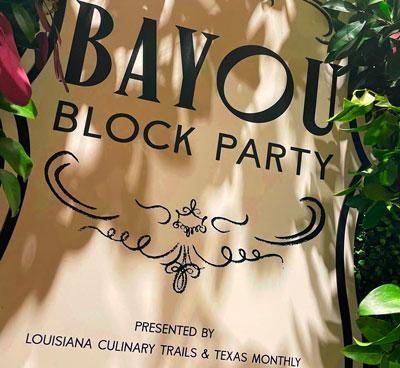It’s “Septempranillo Day”– A Tempranillo Tasting with Pedro Garcia, Chef, Sommelier, Proprietor at El Meson Restaurant
Unless you’ve seen one of my previous blog posts, you are probably think…Septempranillo, What the hell is that! Well, by way of introduction, it’s the short form way to refer to the 1st International Tempranillo Day (hastag #TempranilloDay) which is being held today, September 1, 2011. It all started about 7 am (central time) on the Pacific island of Samoa. I don’t really know if they drink Tempranillo there, but that was the first land mass to cross the great divide into Septempranillo time and space.
So, its official start time for a TweetChat where people from around the world on Twitter can share their Tempranillo thoughts and stories using the hashtag #TempranilloDay.
I did my “Septempranillo Celebrating” with the affable, multitalented and definitely food/wine knowledgeable Pedro Angel Garcia (Chef, Sommelier, Proprietor) at El Meson Restaurant located in Rice Village near city-center Houston, Texas. There is no one in Houston that knows more about Tempranillo and wine/food of Spain that Pedro. He is also a stage actor (known as Peter Garcia) and now director bringing the play Anna in the Tropics to Houston to be given in both English and Spanish.

We sat are the bar in his El Meson Restaurant and exchanged our impressions of a long flight of new-world Tempranillos from Texas and California.
As we looked over the day’s selection of Tempranillo and read the notes on the bottles, Pedro said, “Tempranillo is actually a very moveable or mutable grape. It that can be made into wines with a variety of characters. Tempranillo can actually be made to emulate many styles and the characteristics of other grapes.”
It was obvious that he was right. The recently opened Tempranillos on his bar were all over the map in styles; some were single varietals or vineyard designated wines while others were blends, they offered a wide range of alcoholic content(about 13-15%), came from new and old established vineyards in Texas and California, where aged in American and/or French oak, and gave impressions of new and old world (European) wines.
One more thing that was obvious was that all of the wines were from what would be considered warm-weather regions: Texas Hill Country, Texas High Plains, as well as California’s Sierra Foothills, Paso Robles, and Amador and Calaveras Counties. Why do you reckon that was the case? Well, all you have to do is think of Spain and that will tell you why. From my trip there, I still remember riding on a train and looking out over the country side. While in September, I looked out over the dry, sunny-hot and sandy hills where olive trees and vast vineyard resided looking much like what I’ve seen in many parts of Texas and southern California.
Here is a summary of what Pedro and I tasted in our Septempranillo Day experience:
Haak Vineyards Tempranillo 2008, Reddy Vineyard (13% Alc. $14.95, Texas High Plains)
This youthful-tasting, new-world styled wine had a garnet-red color showed fruit with oak in a secondary or tertiary role (likely from neutral oak). It was not the classic Spanish style, but an easy drinking low acid fun wine offering candied raspberry and darker sweet fruits over a toasty finish. In Spain, wines like this are known as Joven (young) wines and meant to be consumed in their youth as everyday wines with tapas and light-hearted conversation.
In Texas, Tempranillo is something that is on a fast rise with the number of wineries working with this varietal going from just a 3 or 4 wineries to 30+ in just the past few years. Styles vary from light and fresh-fruity to serious oak treated wines.
Coral Mustang Tempranillo 2005, Vista Creek Vineyard (14.5% Alc. $24, Paso Robles, California)
Brilliant wine yielding anise with medium plus alcohol, moderate acidity but nicely in balance with ripe fruit presence in the glass: Blueberry, black cherry, plum overlaid with smokiness giving an old-world wet earth feel. Firm but not biting tannin is a stepped up from the previous wine; an integration of American with softer French oak. It’s got a California style but also has the presence of a Spanish Ribera del Duero. Drink this wine and think: grilled meats.
Pedernales Cellars Reserve Tempranillo 2009 (13.4% Alc. $29, Texas)
A mix of Texas High Plains and Texas Hill Country Tempranillo, this wine offered an expression of a lighter “European style” with medium body and alcohol carrying red berry, mushroom and vanilla with crisp acidity and a bit of green herbal characteristics (could be some uneven ripening as 2009 had a hard spring freeze and production from secondary buds). This wine is more like the Haak showing a younger wine style meant to be consumed now or the near future.
Sandstone Cellars IX 2009 (75% Tempranillo-25%Touriga Nacional, 13% Alc. $30, Mason County Texas)
Strong varietal Touriga notes enhance the Iberian character of this wine with prominent blueberry aromas and flavor that comes with a more powerful tannic grip (both are Tourgia traits). This wine will age. It has good acidity, moderate alcohol, well extracted fruit (near opaque-look). It fits into a traditional Rioja mold with alcohol in the 13-13.5 range, but with a modern Rioja style from short time in barrel and more new oak. The IX could easily be what the Spanish call “Alta Expresión Vino” or a wine of high expression, but also perhaps, something from the Iberian region known as Ribera del Duero.
As we progressed through this tasting, the non-traditional aspect of the wines in the tasting was evident. While all were pinned to either the red or dark fruit aspects of the Tempranillo grape, the use of French Oak is definitely non-traditional. It is something that brings more of a Bordeaux-like wine tasting experience, especially when given bottle age.
Twisted Oak “The Spaniard” 2007 (64% Tempranillo-20%Graciano-16%Grenach, 14.4% Alc. $49, Calaveras County, California)
This wine was “the full story” of Tempranillo in what we agreed was a Rioja Alta style of dominant red fruits (strawberry and cherry). It also had a pleasing and complex aroma (aided by the blending with Graciano) that enveloped red fruit, rosemary, mint, and a hint of white pepper. On the palate, the wine gave red fruits with firm yet agreeable tannins and a soft finish gained from 60 percent new French Oak. As the wine opened further, the aroma added pencil lead and mineral characteristics.
Irwin Family Vineyards Tempranillo 2008 (14.8% Alc. $25, Sierra Foothills, California)
It offered ripe, jammy dark fruit aromas followed by notes of vanilla, tobacco and wet earth; again, evidence of a Tempranillo made non-traditionally with French oak. This wine had black cherry on the palate presented in a big California “Red-Zin” style along with high alcohol, but well integrated. It was big, but balanced.
Yorba Tempranillo 2007 Amador County (95% Tempranillo-5% Graciano (14.9% Alc. $38, Sierra Foothills, California)
This wine had even more California Red-Zin style than presented in the previous wine. It had dominant blueberry and red cherry in both aroma and flavor with elements of cedar and lead pencil carried on the nose. There was a lot of power in this wine as we could feel the alcohol warmth on the palate along with lower acidity. The fruit in this wine was very ripe (late-harvested) having a brambly nature of blackberries. The one thing that we both agreed on was that the final two wines of this tasting were “True to their region”, the region of Red Zins.
We benchmarked our American Tempranillo tasting with two wines that Pedro serves at El Meson: Marques de Cáseras 2005 Reserva and Heredad Ugarte 2007 Crianza.
The Cáseras was stylistically traditional with a blend of Tempranillo, Garnacha and Graciano with American oak aging. It yielded a dark ruby color with good concentration of fruit and tannins. By comparison, the Ugarte was decided a more modern-styled wine, a blend of Tempranillo and Garnacha that was on French oak for over a year. The Ugarte had darker berry aromas and flavors with the same savory components observed in the American Tempranillos that used barrel treatments involving French oak.
— — — — —
The Bottomline
The bottom line was that the American Tempranillos had their own style. The California wines were decidedly made in a bigger, darker, higher alcohol (up to 15%) style of the famous Red-Zins made in the warm climes from Paso Robles to Lodi, California. The Texas Tempranillos while coming from a acknowledged warm growing region matched their Spanish counterparts better on alcohol (13 to 13.5%) and generally showed more red fruit characteristics and less extraction than their counterparts from California.
I asked Pedro for his pick of the bunch and he came up with the following three wines as his favorites from California and Texas:
From California: Coral Mustang Tempranillo was a clear No. 1, followed by the Irwin Family Vineyards Tempranillo – Both showed a distinctly California Style of big ripe (even late-harvest) fruit and alcoholic power, but tastefully done and in balance of fruit, alcohol and acidity….and throw in a good pinch of French oak aging.
From Texas: Sandstone Cellars IX (Tempranillo-Tourgia blend) yielded an interesting presentation showing more moderate expression of dark fruit fruit and alcohol (compared to the California wines), but one which struck us both as having a distinctive Iberian character, and from a possible similarity to the wines of the Ribera del Duero region.
— — — — —
Septempranillo Day II Blog
With respect to this latter point (comparison of the Sandstone Cellars IX to the wines of Ribera del Duero), I’ll have more on this in my next blog posting (Septempranillo Day II). I will sample these same wines with a group of civilian tasters (including as a benchmark, a Tempranillo-based wine from Ribera del Duero) and see how the they actually compare. Stay tuned for this weekend’s post. Hint: Do you know the wine term – “Table Blend”.





Thank you for supporting Tempranillo Day and the great review!
One of my missions is to keep the alcs lower – which can be difficult since grapes do want to ‘over-ripen’ especially in the arid eastside of Paso. I do pick for flavor and the Paso vineyard I source from is best at about 24-24.5 Brix. I have a vineyard in Alexander Valley that is better at 23!
My focus has been to show that Tempranillo can be a stand alone. I have also stuck with the ‘tradition’ of American oak and just enough to round out the finish for me- only 5-10% new depending on the fruit.
I am looking forward to your post with the Ribera comparison!
The Mustang Winemaker
My focus has been to show that Tempranillo can be a stand alone. I have also stuck with the ‘tradition’ of American oak and just enough to round out the finish for me- only 5-10% new depending on the fruit.